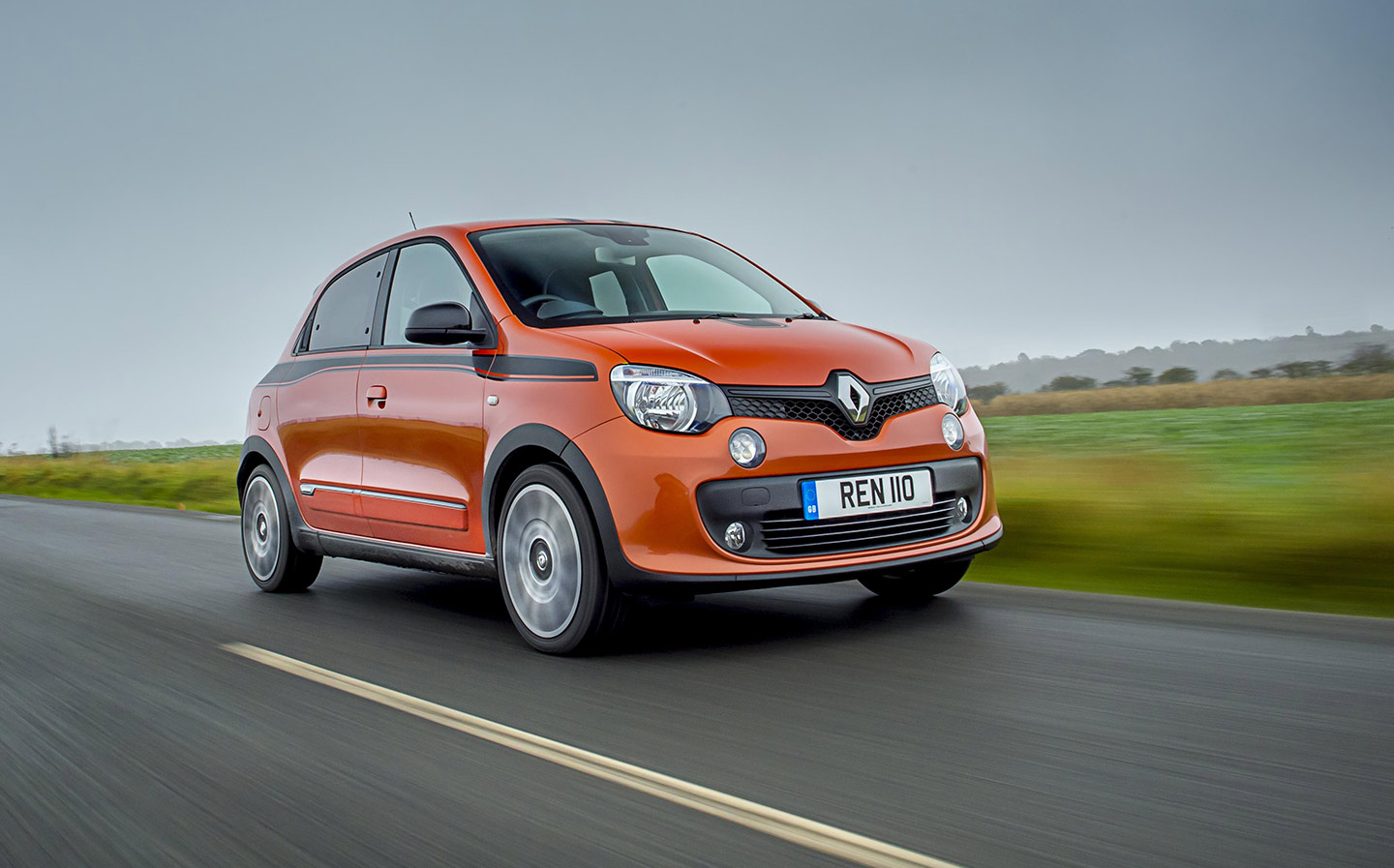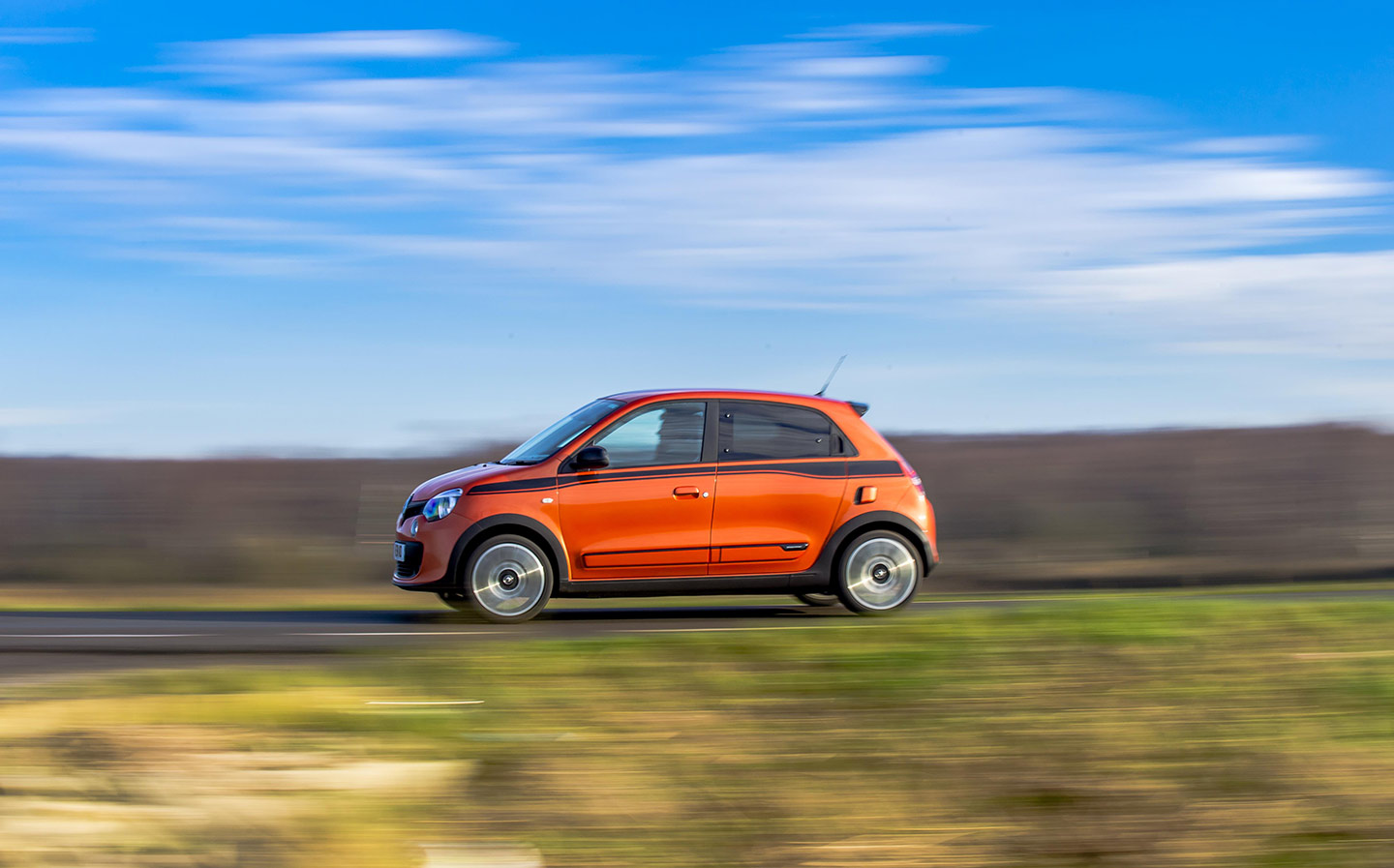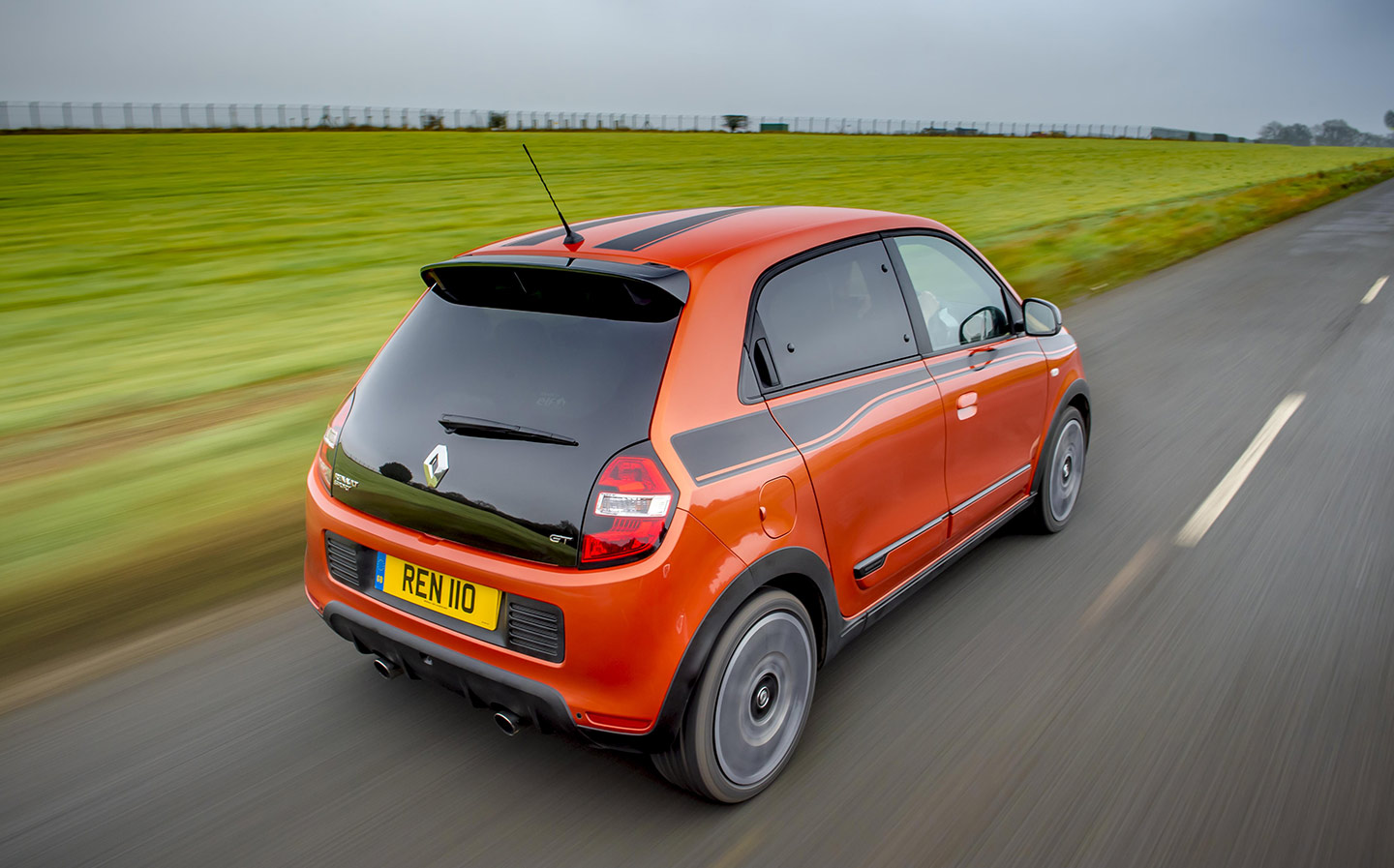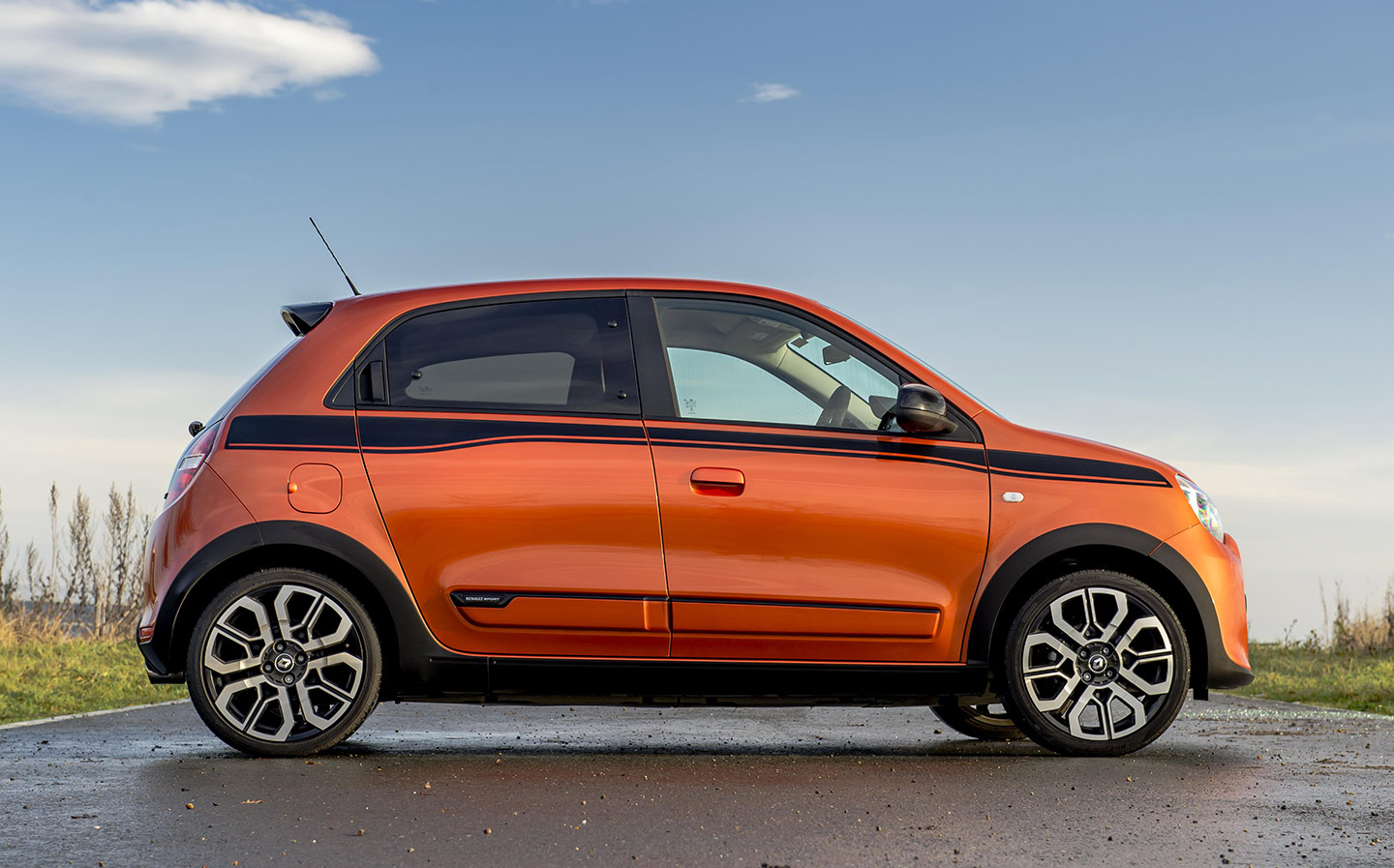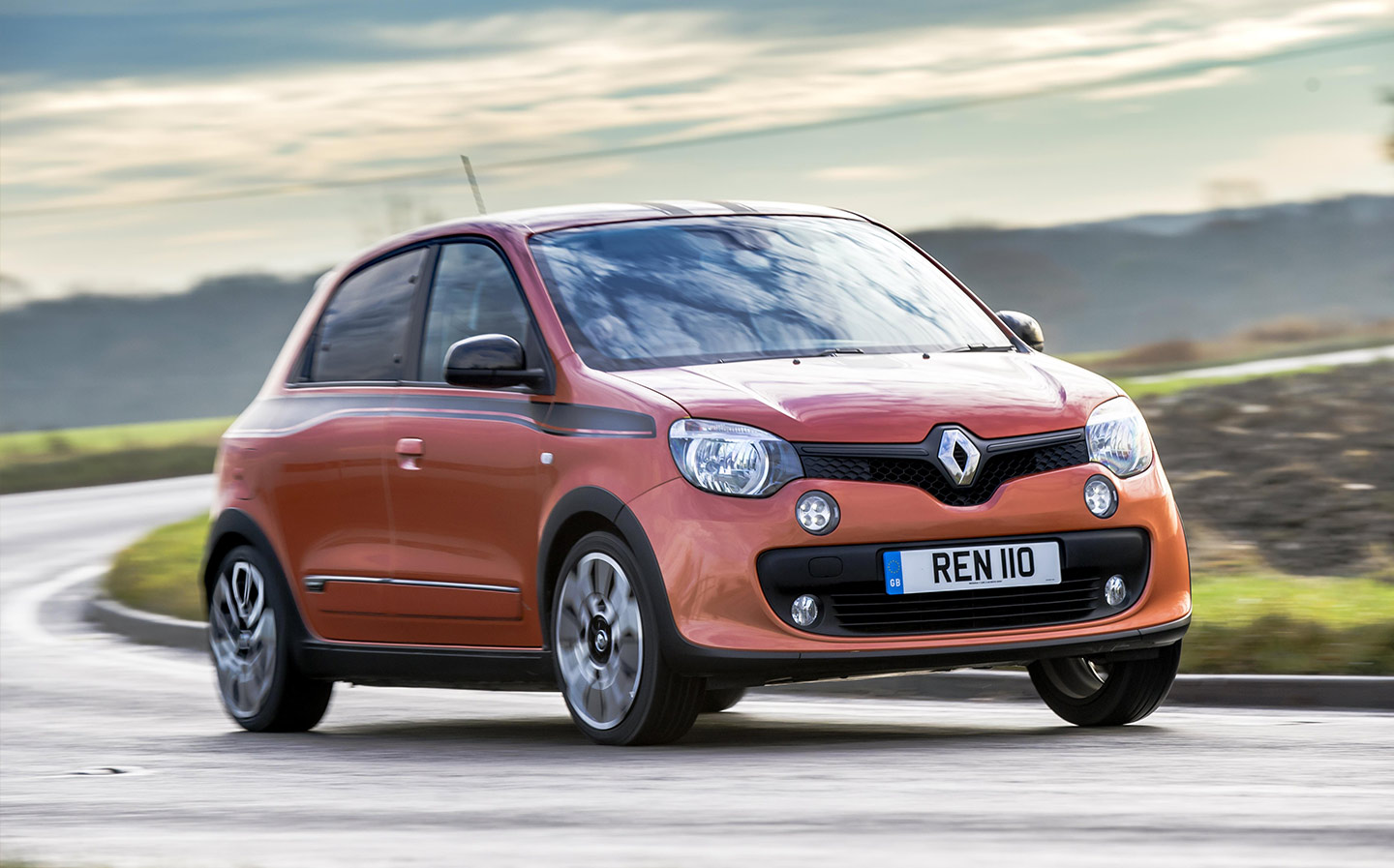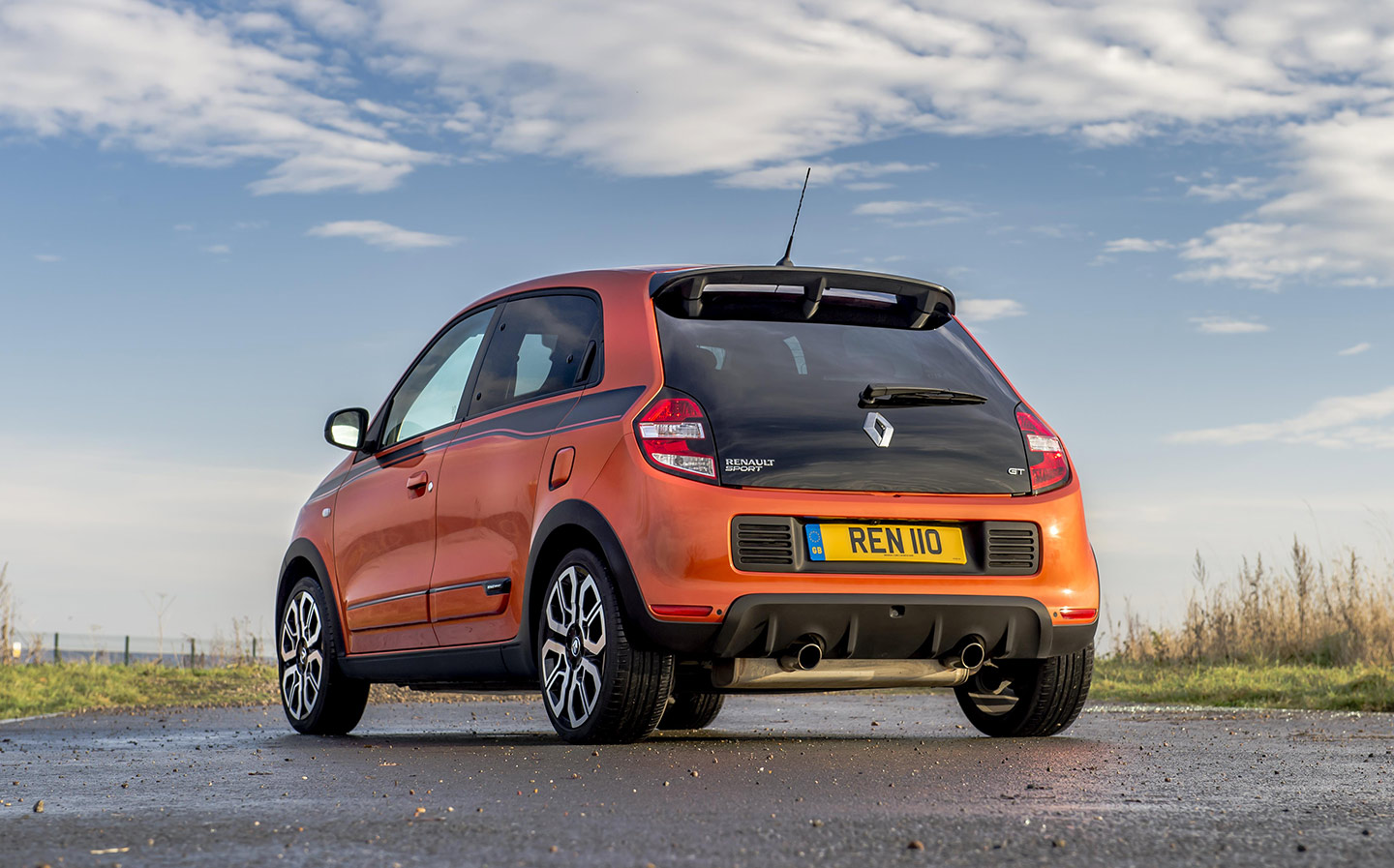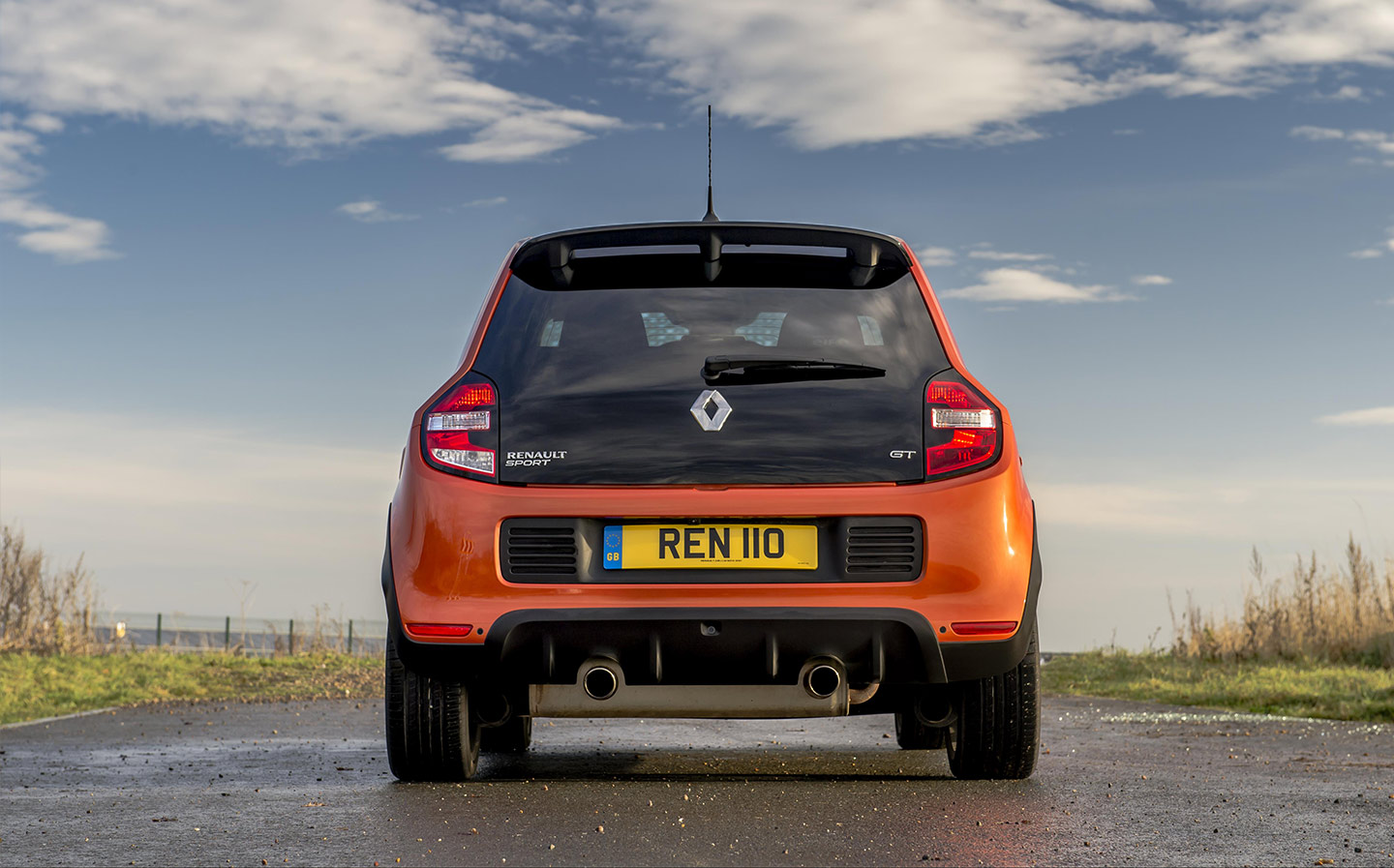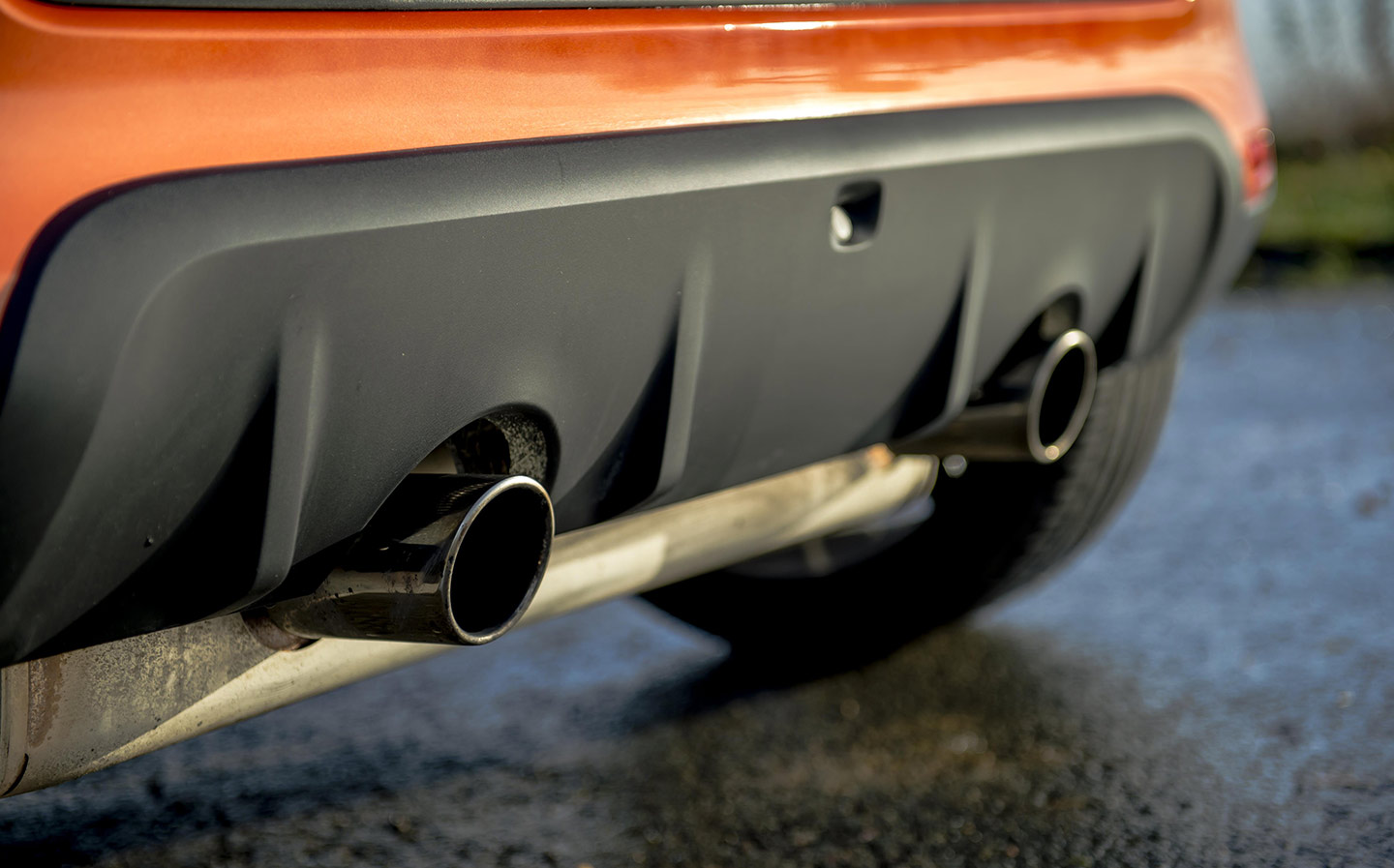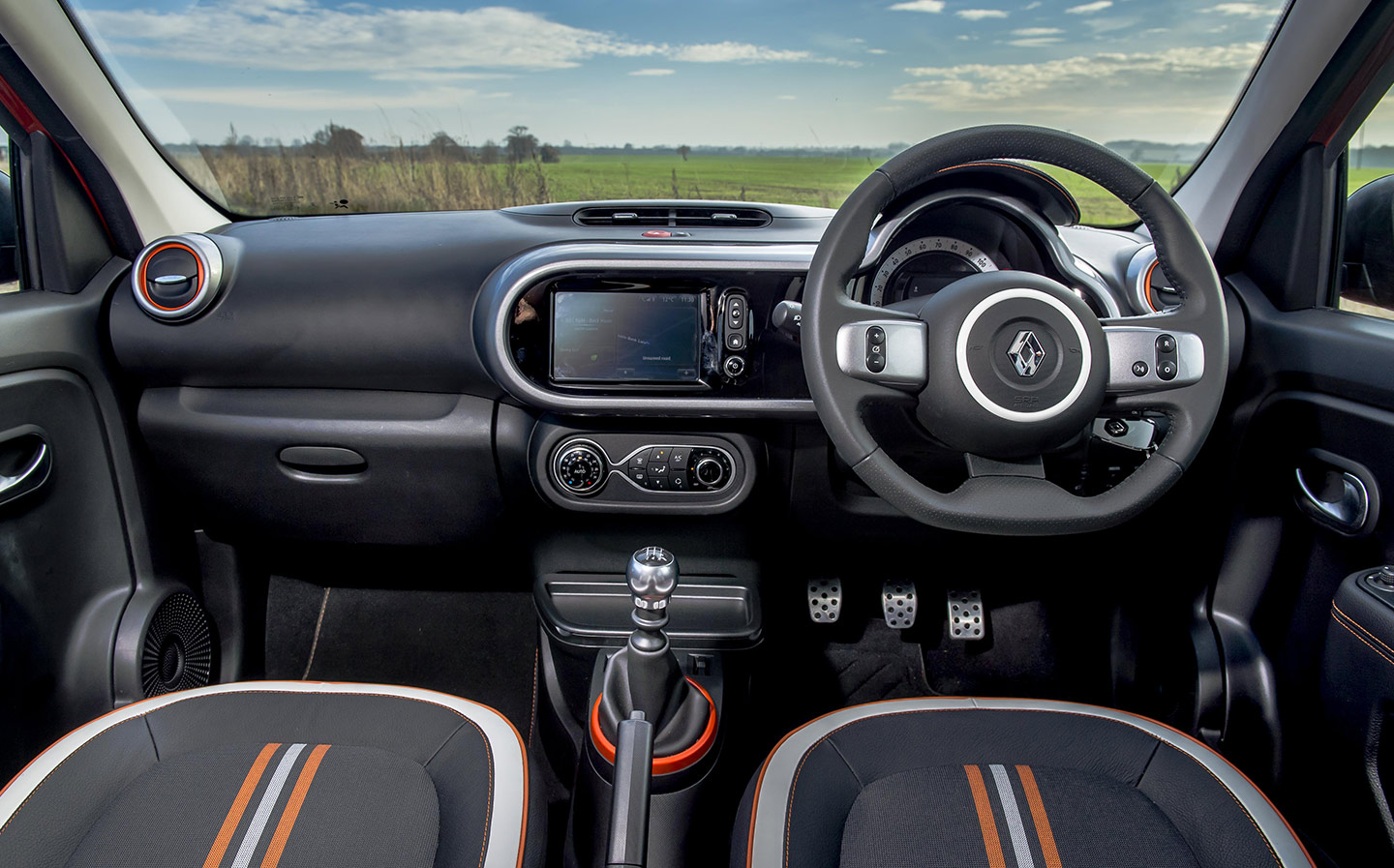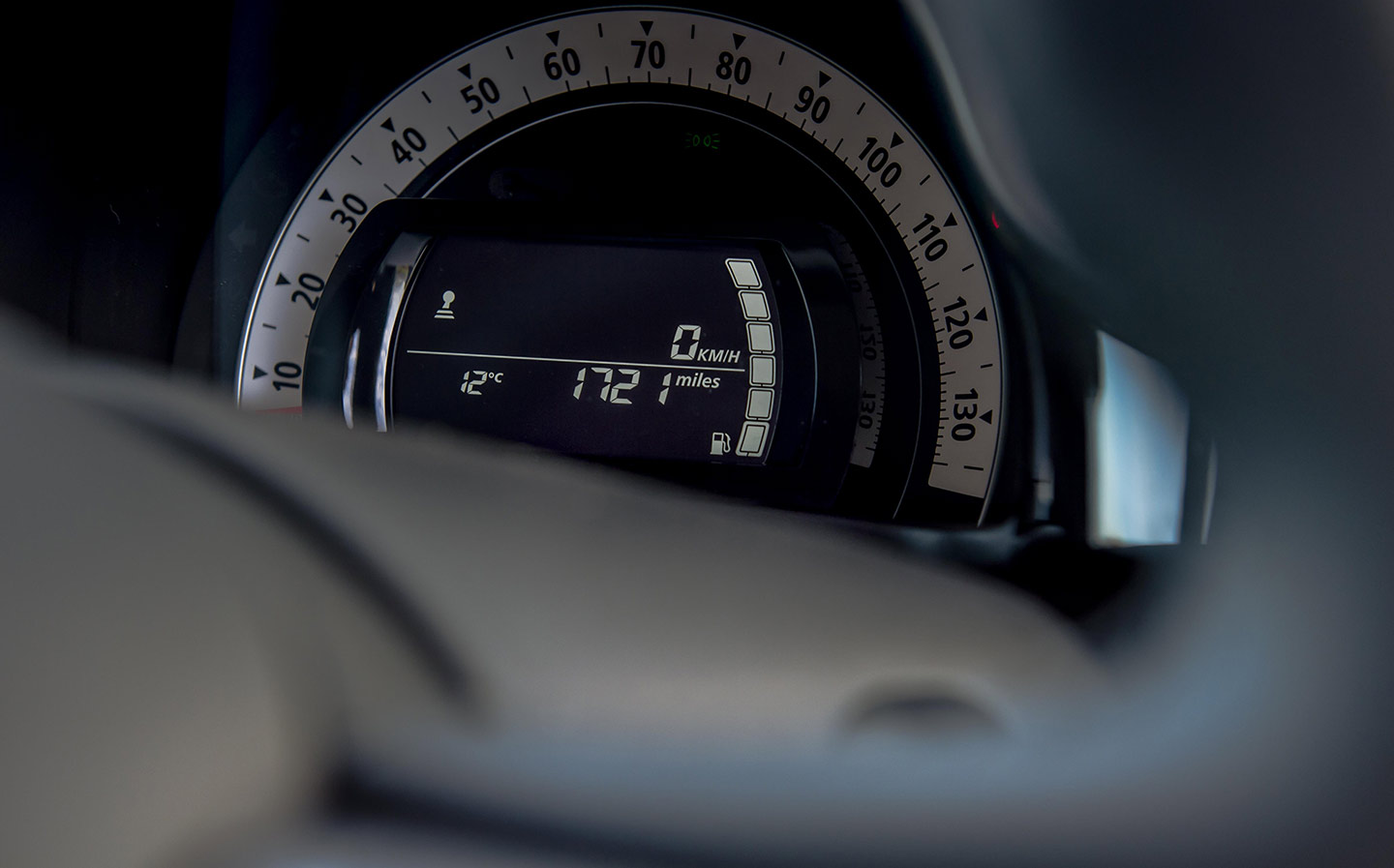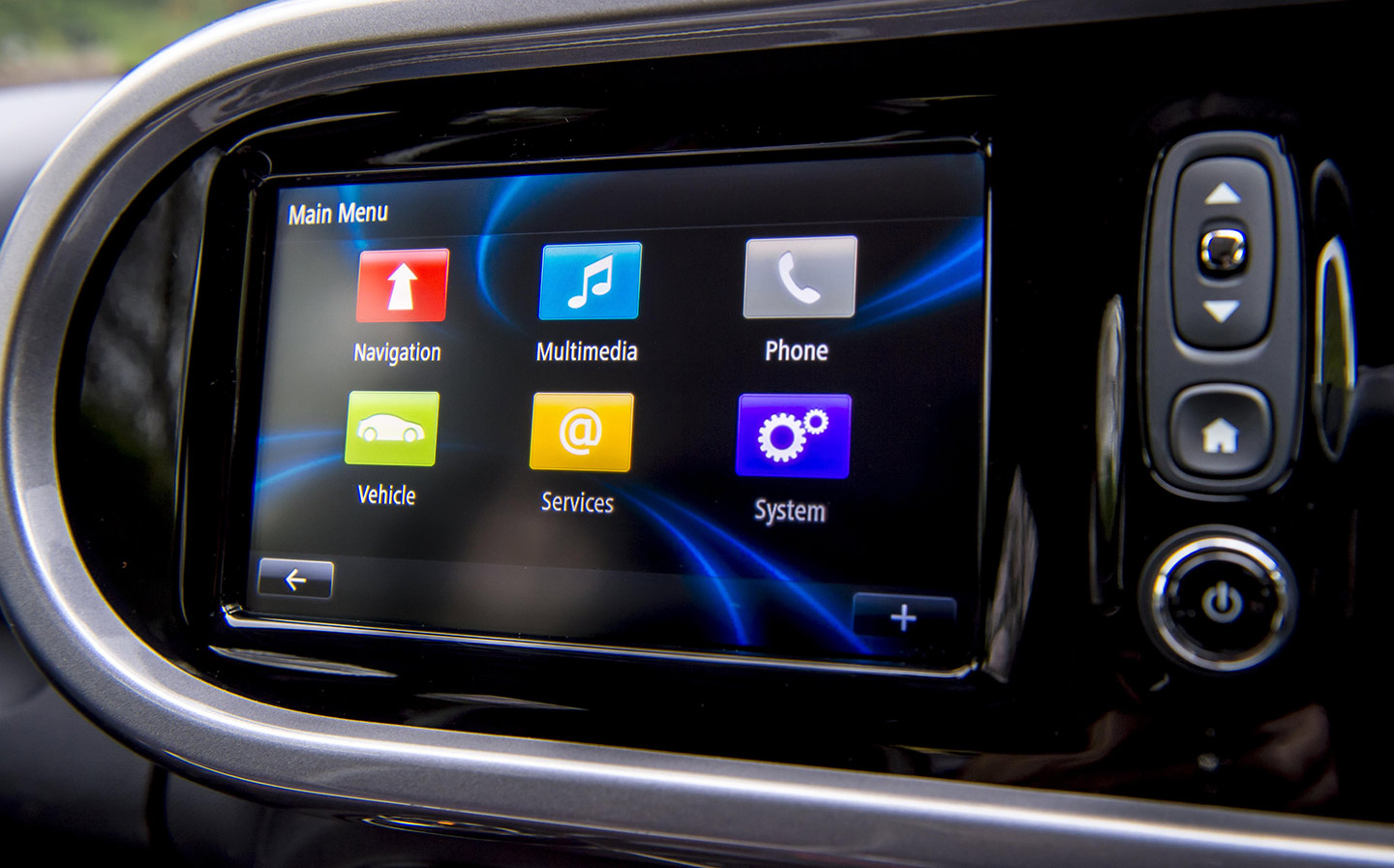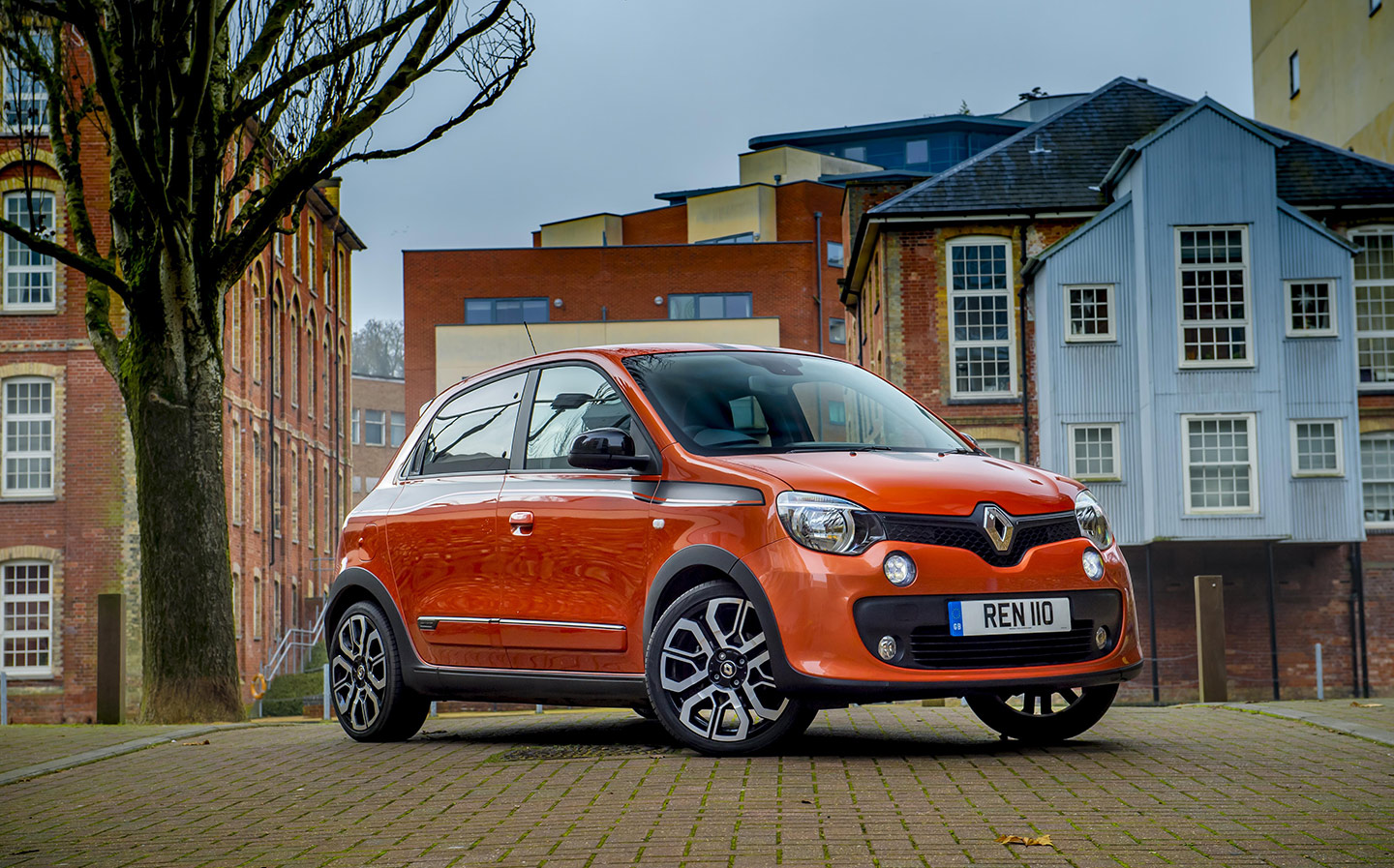The Clarkson Review: Renault Twingo GT
So hot, you can cook breakfast in the boot
WHEN RENAULT introduced its latest Twingo, many motoring journalists scoffed. They said it was slow, and that if you pushed it hard through the corners, it would understeer instead of settling into a nice, smoky drift.
Well, I’m sorry for gaping in astonishment like a wounded fish, but what were they expecting? It’s a city car with a rear engine that would be dismissed by coffee lovers as too weak to grind their beans. So of course it wasn’t going to be fast, and of course its tail wouldn’t swing wide in the corners, because it would mostly be driven by the sort of people who’d crap themselves if it did.
Criticising the baby Renault for not being an out-and-out racer is like buying a record player and criticising it for not being any good at unblocking the sink.
Browse NEW or USED cars for sale
The problem is that Renault put the engine at the back. So everyone thought, “Well, if it’s there, as it is in a Porsche 911, then it must feel like a Porsche 911.” Er, no. The engine in a small Peugeot is at the front, as it is in a Ferrari California, but the two cars feel alike only in the sense that you must sit down to drive them.
And speaking of Peugeot: a friend of mine recently bought a horrible 108 for his daughter. “Why have you done that?” I wailed. “You must hate her. It’s a terrible car.” He listened as I droned on about how tinny it was, and how everything inside felt cheap, and then he said, “Yes. But she gets three years’ free insurance, which saves me six grand.”
This is what we tend to forget in this business. While we are looking for handling anomalies as we drift through Stowe corner at 120mph, it doesn’t occur to us that most people care about safety and running costs and don’t care about tread shuffle or an ability to deal smoothly with mid-corner bumps when you’re at the limit.
Which brings me back to the Twingo. I didn’t like it either, really, because I can’t see the point of a “city car”. Yes, it costs about 75p, but that is hardly good value if you have to leave it at home every time you want to travel more than 30 miles.
You may sneer at this. You may say that if it has an engine, it’s perfectly capable of motorway travel. And who cares if it’s a bit bouncy and noisy and strained? Hmmm. This argument doesn’t wash, because, actually, a very small car with a very small engine is not really capable of handling a motorway.
You put your foot down on the slip road and accelerate so hard that the valves start to make dents in the bonnet, but you’ll barely be doing 55mph by the time you’re ready to join the motorway. Which is a problem, because your path to the inside lane is blocked by a lorry doing 56mph.
‘It’s a hoot to out-accelerate most family saloons and then bomb along in a car that really belongs in a Hot Wheels set’
What do you do? You can’t pull out, because you’ll be squidged. You can’t accelerate, because the engine is giving all it’s got to give. And you can’t slow down, because it would take too long to get back up to a reasonable speed again.
Then there’s the issue of hills. In my daughter’s old Fiesta, which had a 0.00001-litre engine, you’d have to start thinking about the M40 incline over the Chilterns when you were still several miles north of Banbury. And even then you’d reach the summit huffing and puffing like me when I walk to the top of the stairs.
Off the motorway things are no better, because in a small-engined small car you are forced to drive at the speed of the driver in front. If he’s on a tractor, this is very annoying. It is so annoying that eventually you will attempt to overtake, and this will result in your death because you simply do not have the grunt to get past in much less than four hours.
Make no mistake, then. Cars designed to work only in the city are silly, because in the city you have Ubers and proper cabs and Tubes and buses and bicycle lanes. It’s the one place you don’t need a car. And in the place where you do — which is everywhere else — city cars are noisy and dangerous.
And that brings me to the Renault Twingo GT. It started in life as a city car, but it has been breathed on to give it some real-world poke. It still has a tiny, 0.9-litre three-cylinder engine, but it’s turbocharged, so it produces a thrummy, off-beat 108 brake horsepower. This is a car that sounds like one of those very small dogs that growl the growl of a Great Dane. I liked it. It was amusing.
And I liked the speed too. I know 108bhp doesn’t sound much, but it’s what you used to get from the original Golf GTI. And no one said that was too slow for motorways.
The power delivery is a bit weird — it comes in lumps — but it’s a hoot to out-accelerate most family saloons and then bomb along in a car that really belongs in a Hot Wheels set.
The way it handles is less impressive. The steering is done by guesswork — there’s no feel at all — and you never have any clue that the engine’s at the back. Sporty it is not. And that’s fine, because this, after all, is a car designed for the city that happens to have the poke to deal with everywhere else as well.
And it looks tremendous. It’s pretty anyway, and with a dinky rear air scoop to feed the turbo, and twin exhausts, it’s brilliant. Mine was fitted with the optional stripes, which made it feel like a soap-box racer and me feel I was nine. It made me smile.
And that’s before we get to the really impressive stuff. I went out one night with another grown-up in the front and three teenagers in the back. There was quite a lot of complaining, I admit, but the fact is that we fitted. And if I accelerated hard, the whizzy little engine drowned out the moaning.
Browse NEW or USED cars for sale
The only problem with doing this is that the engine gets hot, which means anything you have in the boot gets hot too. This is a car that can turn your weekly shop into a delicious, piping-hot omelette before you get home.
Oh, and then there’s the turning circle: it seems to be able to turn in its own length. It makes a black cab look cumbersome.
So there we are: a nifty, practical car that looks good, goes well and makes you happy. And all for £14,000. It hasn’t won many fans with writers in the specialist press, because they still think it should go and handle like a 911. But I liked it a lot, because the comparison never entered my head.
Head to head: Renault Twingo GT v Abarth 595
| Twingo GT | Abarth 595 | |
| Price | £14,085 | £15,260 |
| Fuel | 54.3mpg | 47.1mpg |
| 0-62mph | 9.6sec | 7.8sec |
| Top speed | 113mph | 130mph |
Write to us at driving@sunday-times.co.uk, or Driving, The Sunday Times, 1 London Bridge Street, London SE1 9GF


